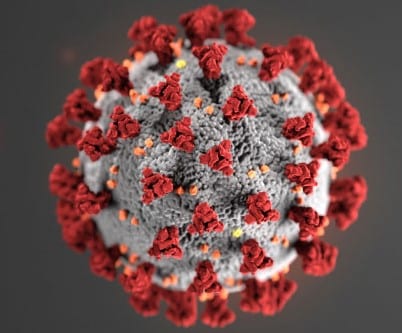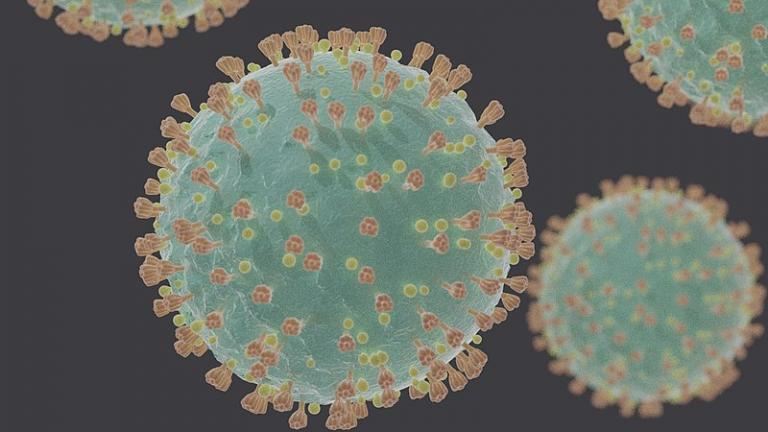
Is hydroxychloroquine an effective treatment for COVID-19*?
Are ventilators effective in treating patients as the disease worsens?
Why are African-Americans dying in greater numbers?
Let’s talk science.
How many times have you heard the phrase “the science is settled”? That’s been repeated endlessly with respect to climate change, but, in fact, the reality of science is that it is never settled.
Many years ago, as a student of history, I had a class in “historiography” in which the professor aimed to provide readings that would broaden the students’ understanding in a wider way than merely instruction in research methods. We read about Cargo Cults in a book called Cows, Pigs, Wars, and Witches, and we read about paradigm shifts in the classic The Structure of Scientific Revolutions, by Thomas Kuhn. (Yes, reader, when I read the book, I believed the word was pronounced “para-dig-m” instead of “para-dime”.) Here’s how Wikipedia summarizes his argument:
Kuhn challenged the then prevailing view of progress in science in which scientific progress was viewed as “development-by-accumulation” of accepted facts and theories. Kuhn argued for an episodic model in which periods of conceptual continuity where there is cumulative progress, which Kuhn referred to as periods of “normal science”, were interrupted by periods of revolutionary science. The discovery of “anomalies” during revolutions in science leads to new paradigms. New paradigms then ask new questions of old data, move beyond the mere “puzzle-solving” of the previous paradigm, change the rules of the game and the “map” directing new research.
And permit me to cite two examples from medical research outside the coronavirus.
First, stem cell transplants for breast cancer.
Back, well, when the internet was in its infancy and one learned about news through actual newspapers, I recall reading about stem cell transplants, then watching the process play out for a relative of a friend, who was diagnosed with breast cancer and, as it advanced, treated with a stem cell transplant — for those who don’t recall, this was a method in which the patient’s stem cells were removed, then the patient received extremely high doses of chemotherapy, to completely kill the cancer but, as a consequence, destroying the immune system, and then the stem cells were re-infused. The risks of the procedure were great but it was believed that the reward was greater — but, as it happened, my friend’s relative died. Now, doctors were so convinced of the efficacy of the treatment that insurance companies were pressured to cover it despite its experimental nature, and that the usual protocols of randomized controlled trials (RCT) were not followed — because, after all, to deny half a test population a lifesaving treatment would consign them unfairly to death.
You may know the end of the story: when a RCT was finally conducted in 2000, it found that this procedure actually offered patients no benefit compared to conventional treatment. (You can read the whole story at Health Affairs.)
Second, research into Alzheimer’s Disease, and, more specifically, the amyloid hypothesis, that is, the theory that sticky brain plaques cause Alzheimer’s and that removing or preventing those plaques will cure or prevent the disease.
This theory became entrenched in the research for Alzheimer’s; a video at STAT describes the manner in which researchers moved from one failed drug trial to the next based on this theory. But here’s an editorial at that publication from April of 2019:
If insanity is doing the same thing over and over again but expecting different results, then the last decade or so of Alzheimer’s disease drug development has been insane. Three carefully designed, well-executed, and fully resourced trials targeting amyloid protein in the brain as the cause of Alzheimer’s disease have failed. It’s long past time to take a new approach to this mind-robbing disease. . . .
A comfortable partnership developed between believers in the amyloid hypothesis, funding agencies, and drug companies, so that only programs supporting this hypothesis were funded. Even today, the largest amount of NIH funding for Alzheimer’s disease research goes to amyloid-0related research.
Following the advice of their academic advisers — most of them members of the amyloid cabal — drug companies dutifully developed drugs to target amyloid with the goal of treating Alzheimer’s disease. Thy believed it was only a matter of time before the Alzheimer’s problem was solved. . . .
Other ideas were starved of funding or greeted with polite rolling of the eyes. . . .
This is a good place to talk about groupthink, the psychological phenomenon that occurs within a group of people in which the desire for harmony or conformity results in irrational or dysfunctional decision-making. Groupthink describes the funding and execution of Alzheimer’s disease research and drug development over the last 30 years. Once amyloid became the target, all other ideas were abandoned, shunned, even ridiculed. Although I believe that this dark period is behind us, we’ve wasted three decades and billions of dollars.
Which brings me to COVID-19.
Trump is promoting the possible use of hydroxychloroquine as a treatment for the disease. Is he doing so recklessly? Are naysayers naysaying for scientific grounds or anti-Trump grounds?
One of the key issues is that there have not yet been RCTs for this treatment. In a disease such as COVID-19, where the large majority of people do recover, one way or the other, touting one treatment or another as a breakthrough without following a protocol of a control group cannot produce valid results, but here the French doctor who has been promoting this treatment, in combination with azithromycin, Didier Raoult, has been doing exactly this, by claiming that his treatment is so clearly successful that it would unethical to deny it to his patients. (See this Forbes article for a distillation of the debate, and a Q&A at The Hospitalist for some further scholarly comments.)
But hydroxychloroquine is not the only aspect of the pandemic where conventional wisdom and science are at odds.
Second, ventilators: here’s a report from STAT on April 8th: “With ventilators running out, doctors say the machines are overused for Covid-19.”
Even as hospitals and governors raise the alarm about a shortage of ventilators, some critical care physicians are questioning the widespread use of the breathing machines for Covid-19 patients, saying that large numbers of patients could instead be treated with less intensive respiratory support.
If the iconoclasts are right, putting coronavirus patients on ventilators could be of little benefit to many and even harmful to some.
What’s driving this reassessment is a baffling observation about Covid-19: Many patients have blood oxygen levels so low they should be dead. But they’re not gasping for air, their hearts aren’t racing, and their brains show no signs of blinking off from lack of oxygen.
That is making critical care physicians suspect that blood levels of oxygen, which for decades have driven decisions about breathing support for patients with pneumonia and acute respiratory distress, might be misleading them about how to care for those with Covid-19. In particular, more and more are concerned about the use of intubation and mechanical ventilators. They argue that more patients could receive simpler, noninvasive respiratory support, such as the breathing masks used in sleep apnea, at least to start with and maybe for the duration of the illness.
This is not just a matter of trying to save money or resources by minimizing the use of ventilators. As the article reports, ventilation can actually cause harm: “Older patients who do survive risk permanent cognitive and respiratory damage from being on heavy sedation for many days if not weeks and from the intubation.”
And patients with COVID-19 who are placed on ventilators have an extremely high fatality rate: in one instance, 30 of 37 patients placed on mechanical ventilation died within a month. In another, only one out of seven patients older than 70, placed on a ventilator, survived.
What’s more,
one of the most severe consequences of Covid-19 suggests another reason the ventilators aren’t more beneficial. In acute respiratory distress syndrome, which results from immune cells ravaging the lungs and kills many Covid-19 patients, the air sacs of the lungs become filled with a gummy yellow fluid. “That limits oxygen transfer from the lungs to the blood even when a machine pumps in oxygen,” [Harvard Medical School physician Dr. Muriel] Gillick said.
All of which leads to the question: should RCTs be conducted for the treatment of using ventilators for COVID-19, rather than doctors assuming that this is an effective treatment because it is used for other respiratory diseases?
And, finally, here’s a highly speculative observation coming out of a Facebook group: β-thalassaemia (or beta-thalassaemia, or thalassemia without the “ae”) is a blood disorder which is connected to anemia. (Here’s a lay description of the disorder.) This disorder is inherited, and the mild form causes no health issues so that carriers will pass on the disorder; it is common in the Mediterranean and the Middle East in the same manner as sickle-cell anemia is found in Africa and among individuals with African ancestry; in both cases, the mild form of the trait conferred protection against malaria.
What does this have to do with anything? Thalassaemia is prevalent in the Po valley, which is the region in northern Italy which is being hardest hit by COVID-19. At the same time, within the US, blacks (that is, people of African descent) are disproportionately likely to die of COVID-19. Within the US, this is being explained as due to socioeconomic disparities in that population — and there clearly are significant disparities — but is the paradigm that “all health disparities are caused by socioeconomic disparities because race is only a social construct” preventing researchers from identifying physiological differences, and, as a result, limiting scientists’ understanding of how to treat the disease?
In any event, the more I read, the stronger I feel that the answer to the search for a treatment for coronavirus will hinge on our scientists’ ability to look beyond groupthink and get at the basic science that underlies the disease, whatever that may be.
*Look, I’d love to call it the Wuhan Virus, the Chinese Flu, or any other such phrase that communicates the role that China played in causing/exacerbating the pandemic, and I quite like the backronym, or alternative acronym, “China-originated virus in December 19” (rather than COronaVIrus Disesase), but, let’s face it, we need a common nomenclature.











